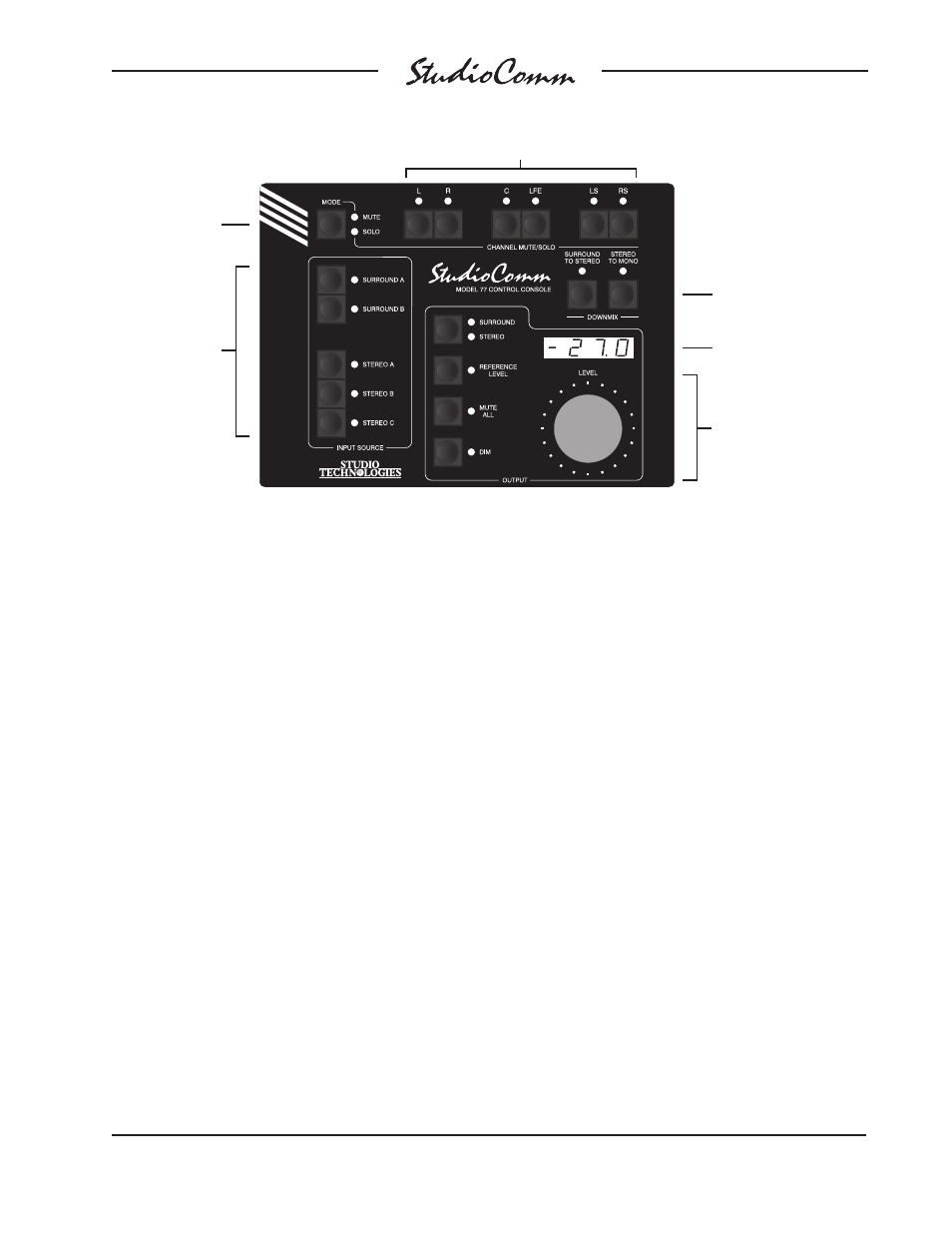Additional details – Studio Technologies 76DA V.4.12 User Manual
Page 7

Model 76DA/77 User Guide
Issue 9, May 2014
Studio Technologies, Inc.
Page 7
for Surround
Figure 3. Model 77 Control Console Front Panel
Channel mute/solo
Mute/solo
mode
Post-fader surround
monitor output
• Surround/stereo
• Reference level
• Mute all
• Dim
• Rotary level control
Monitor output
level display
Input source
select
Downmix
frequency energy from the five surround
and two stereo channels can be separated
and then routed to the subwoofer loud-
speaker. Several of the bass management
functions can be configured to match the
requirements of specific installations.
Great care was taken in designing the
system’s architecture, ensuring that the
character of the audio input signals is pre-
served. All audio processing, including bass
management, is performed in 32 bits using
a high-speed field-programmable gate array
(FPGA) integrated circuit.
The Model 76DA occupies one space (1U)
in a standard 19-inch rack. Digital audio
sources are interfaced with the Model 76DA
using nine BNC connectors. A tenth BNC
connector is used by the sync source.
Digital and analog monitor output signal
connections are made using two 25-pin
female D-subminiature connectors. One
9-pin female D-subminiature connector
is used to connect the Model 76DA with
up to four Model 77 or Model 71 Control
Consoles. A second 9-pin female “D-sub”
connector is used to interface with remote
control signals. AC mains power is
connected directly to the Model 76DA,
with an acceptable range of 100 to 230
volts, 50/60 Hz.
Additional Details
The Model 77 provides five buttons and as-
sociated LEDs for selection of the surround
and stereo input sources to be monitored.
While in most cases only one input source
will be monitored at a time, stereo input C
can be selected for simultaneous monitoring
with one of the two surround or other two
stereo inputs. This allows the two selected
inputs to be combined (“summed”).
It’s interesting to note that while each of the
two surround inputs has an LFE channel
associated with it, the “.1” post-fader digital
and analog surround monitor outputs are
designated as SUB (subwoofer), rather than
LFE. This terminology was carefully selected
to highlight the fact that this output channel
may include more than just LFE content.
The bass management function, if enabled,
